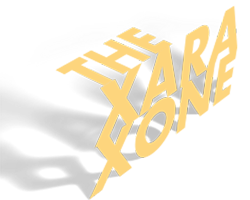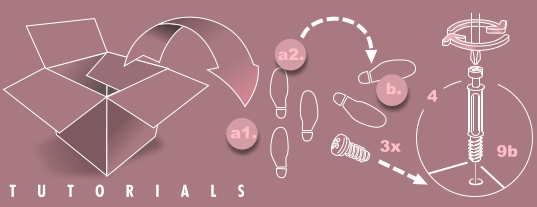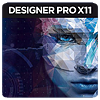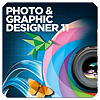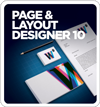
A tutorial by Gary W. Priester
Download this tutorial: Wine Grapes Nov 2011 Xara Xone Tutorial
I recently had need for some vineyard and wine grapes photos for textures for a stereogram project. I have not lived in the California wine country for over a decade and so I had no photos of my own. Then I had an inspiration. My good, virtual friend Gerry Woodruff lives in France and travels a good deal with his talented wife Verna (talented, because unlike Gerry, Verna can see my stereograms quite clearly). So I emailed Gerry and asked if per chance he had any wine country photos. And not only was the answer yes, but his photos were perfect for what I needed. High resolution, large, and beautifully composed.
Joel Schilling, the world traveler dentist, and chronicler of Riley, quite possibly the world’s most photographed dog, also was able to provide some exceptional vineyard photos as well.
As often happens, one project suggests a tutorial. In the case of this tutorial, grapes and grape leaves.

Red wine grapes are not shiny like table grapes. The reason is they have a coating of yeast which gives them a dull, almost flat appearance. You can see this in the detail photos shown above. In this tutorial, we will attempt to capture this dull look.
Also note the very distinct Cabernet Sauvignon leaf shown above right. We will also attempt to recreate this leaf for our tutorial. And finally, the grapevine’s bamboo like branch. There are 38 steps in this tutorial so warm up your mouses and let’s get started.

Select the Ellipse Tool (L), hold down the Ctrl key to constrain the ellipse to a circle and create a 125 pixel circle. You can see the size on the Infobar at the top of the screen.
TIP: You can create any size circle, then enter the width and height in the W and H text entry boxes on the Infobar, then press Enter. This only works when you first create the ellipse, circle, or rectangle and square and while the object is still selected.
With the circle selected, select the Fill Tool (g), and from the drop down list of Fill Types in the upper left area of the Infobar, select Circular. Click on the left side of the fill path arrow, and use the arrow keys on your keyboard to move the center of the fill up and to the left as shown.
With the center of the fill control handle still selected, open the Color Editor (Ctrl e). Select the RGB Color Model from the Color Model drop down list, and enter the three colors shown above (RGB 235, 240, 255). Now click the control point at the end of the fill path arrow and enter the second set of numbers for the darker color.
Click the Profile arrow icon on the Infobar and from the drop down list of Profile Presets, select Profile 2. This extends the center of the fill outwards.
NOTE: If your values are in percent (%), and not 0-255, right click on the page, select Page Options > Units and change your Color Units: to 0-255.

Clone the circle (Edit > Clone or Ctrl k). Change the fill colors as shown. Click the Profile arrow icon on the Infobar and change the profile to none.

